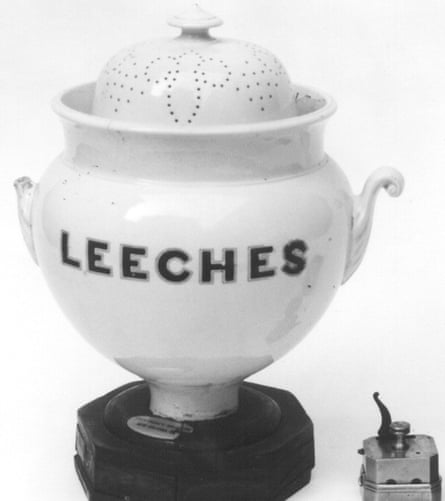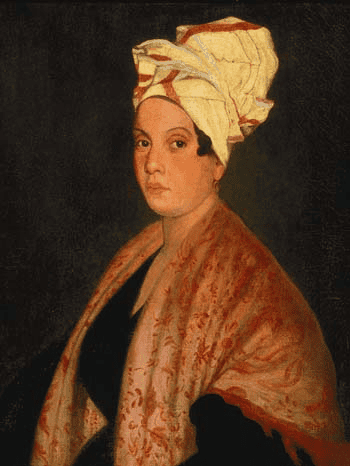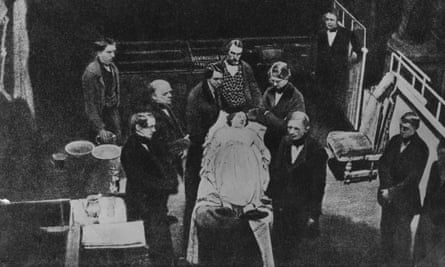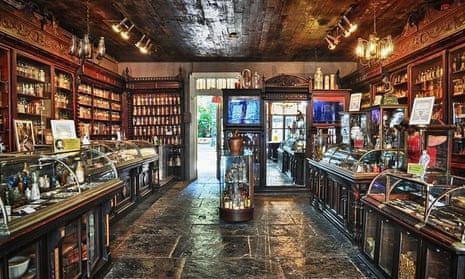I am immediately drawn to the leeches, their lithe bodies twisting and turning in a fishbowl filled with water. They are smaller than I expected. Several people squeal with appalled delight as they shuffle past. One woman taps on the glass and peers inside. “So disgusting,” she says. “Can you imagine?”

I try to and picture a castle on a desolate moor, probably in a thunderstorm. Inside, a lady in a long white gown is in bed, quietly suffering as the worms’ teeth tear through her flesh in a bid to relieve her symptoms. I wonder if anyone else has such fanciful visions.
Although the golden age of the leech has passed, these creatures remain one of the star attractions at the New Orleans Pharmacy Museum. In ancient Rome, the Greek physician Galen advocated the use of leeches to bleed patients, a practice that persisted for over a thousand years. In the early 19th century, 5 to 6 million of them were used annually in Paris hospitals. Leeches stayed busy.
The New Orleans Pharmacy Museum pays homage to the business of the first licensed pharmacist in the US, Louis J Dufilho Jr, who worked out of a classic Creole-American townhouse. Dufilho was educated at the College of Pharmacy in Paris and opened his own pharmacy in 1823 (Louisiana was the first state to require licensing for such establishments, in 1804).
The museum, which opened in 1950, is not so much a preserved window on the past as a restored ruin. Some of its collection was excavated from the small courtyard out back, but many of the objects were also donated by nearby Loyola University, so it is both a real and a curated space.

Not all visitors, however, come to pay homage to medical advancements. They want to worship at the altar of the macabre. The American south has always had a fondness for the gothic, and New Orleans is known for its exquisite 19th-century cemeteries, concrete monuments that testify to the lengths to which we will go to guard the human body from decay. The voodoo queen Marie Laveau is supposedly buried in one such tomb, in St Louis Cemetery No 1.
In line with this lure of the ghoulish, the museum brings the repugnant aspects of medicine out into the open. The sick body, the dying body, the body undergoing treatment: all of these are conjured by the objects that helped and hurt them.
The writer Elaine Scarry argued that pain can’t be represented – prose, poetry, drama, painting, sculpture: all fail to capture it. But if pain can be represented at all, perhaps it is through this paraphernalia: hypodermic needles, probes, a tonsil guillotine, a saw. All of these offer an ample dose of what Edgar Allen Poe called “the imp of the perverse”.
On display is a box of antique tampons, soaked in opium and belladonna to relieve pain and relax the vagina. “There were a lot of tonics geared toward women’s ailments, and most were 25% or more alcohol and had some sort of opiate in them,” explains the museum’s executive director, Elizabeth Sherman. Women could indulge in the privacy of their homes.
Tampons were just one way to administer drugs: the museum’s black and rose marble soda fountain, for example, helped to hide the taste of bitter medicines.
And that’s where the Pharmacy Museum’s genius lies. Most museums tend to decontextualize objects, but this one re-contextualizes them, providing visitors with a sense of how diseases were managed in an increasingly urban and industrialized world. Owen Ever, a docent and the director of the museum’s Cachet Art and Culture Program, explains that the development of pharmacies out of the wild, unregulated world of druggists and apothecaries led to higher standard of practice and professionalism, as well as to the establishment of associations for the advancement of medical knowledge.

That’s not to say that all unsafe practices immediately disappeared, he emphasizes. In fact, danger feels very immediate at the museum. Cure-alls, miracle elixirs, gold-plated pills and mysterious packets of powders and herbs all bring to mind Dr Chillingworth’s “drugs of potency” in The Scarlet Letter, which he made from plants gathered from graves.
The labels on some containers even suggest a lost language: silver nit, cornus flor, gum shellac (a poison, a flowering tree and a resin respectively). And then there are the voodoo potions like the “love drawing powder” (these were often labeled by number rather than by name to keep their purposes secret). Pharmacists combined plants, herbs, minerals, vegetables and animal bones based on recipes from voodoo priestesses, and then sold the concoctions under the counter. Patients might have sought love, luck, money or a cure for a disease. Pharmacists treated syphilis with mercury injections; voodoo practitioners gave their patients moldy bread soaked in milk.
Next, I peer into a display cabinet that held an ether mask. It looks like something you might find in a kitchen, a miniature colander. Bert Hansen, professor of the history of science and medicine at the City University of New York and author of Picturing Medical Practice from Pasteur to Polio, dates the symbolic birth of modern medicine to the first publicly recorded use of ether for surgical anesthesia on 16 October 1846, in Boston’s Massachusetts general hospital. Over 8,000 surgeries were performed in the hospital’s famous ether dome between 1821 and 1868 (before ether, the dome was famous for the screams that emanated from it).

I linger over each object, as if they all have their stories to tell. In the 1970s, Philippe Aries and Ernest Becker wrote about the way we deny death, deeming any real consideration of it as morbid. In the more recent Smoke Get In Your Eyes & Other Lessons from the Crematory, mortician Caitlin Doughty takes a similar position, embracing the macabre as an honest engagement with our mortality.
Thinking about my own inevitable end, I contemplate a trephination drill, which allowed surgeons to bore a hole in the human skull. The object elicits a horrified reaction from a man next to me.
“So you would just be awake, with a hole in your head?” he asks no one in particular.
Well yes, yes you would.
The man then rests his hand on his forehead, as if contemplating what’s beneath his skin.

Comments (…)
Sign in or create your Guardian account to join the discussion